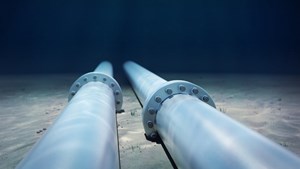Regulators found more groundwater released by pipeline aquifer ruptures
ST. PAUL, Minn. (AP) — The damage to public groundwater resources in Minnesota from missteps during construction of the Line 3 oil pipeline is more severe than previously known, state environmental regulators said.
Enbridge Energy crews ruptured three groundwater aquifers while building the 340-mile (550-kilometer) pipeline across northern Minnesota last year and the company faces sanctions as a result, the state Department of Natural Resources said.
“The DNR continues to work on a comprehensive enforcement resolution, with the goal of addressing restoration, mitigation and additional penalties associated with the three breach locations,” the agency said in a statement Monday after completing its investigation into the aquifer breaches.
The DNR has not specified the penalties being considered.
The punctures led to nearly 300 million gallons of groundwater flowing to the surface, and the most serious breach occurred near the Fond du Lac Band of Lake Superior Chippewa Reservation in St. Louis County. That rupture has discharged more than 200 million gallons so far and the groundwater continues to flow, the Star Tribune reported.
The first breach occurred during the winter of 2021 at a major pipeline junction near Clearbrook, although regulators did not learn about it for several months. About 50 million gallons of groundwater flowed from that rupture, endangering a rare wetland area nearby. State regulators ordered Enbridge to pay $3.3 million and fix the damage.
The DNR learned about a second breach Aug. 5. The breach occurred a few days earlier near LaSalle Creek in Hubbard County and discharged an estimated 9.8 million gallons of groundwater. That flow also has been stopped, the DNR said.
Regulators learned about the third breach Sept. 15, about five days after it was identified. That rupture occurred very close to the Fond du Lac Band’s reservation boundary. It had been gushing about 330 gallons of groundwater per minute but the flow has been reduced to about 6 gallons per minute, according to the DNR.
Enbridge has repaired two of the three puncture sites and repairs at the site affecting the Fond du Lac Band are nearing completion, said Juli Kellner, a spokeswoman for Enbridge.
“Enbridge takes protecting the environment seriously. We regret this happened and are taking steps to improve our procedures to prevent this type of occurrence in the future,” Kellner said.
Line 3 starts in Alberta, Canada, and clips a corner of North Dakota before crossing Minnesota toward Enbridge’s terminal in Superior, Wisconsin. The project was pronounced complete in September.
Related News
From Archive

- Glenfarne Alaska LNG targets late-2026 construction start for 807-mile pipeline project
- U.S. water reuse boom to fuel $47 billion in infrastructure spending through 2035
- $2.3 billion approved to construct 236-mile Texas-to-Gulf gas pipeline
- Major water pipe break in Puerto Rico hits over 165,000 customers
- Potomac River Tunnel project enters construction phase beneath Washington, D.C.
- Pennsylvania American Water launches interactive map to identify, replace lead water service lines
- Trump's tariffs drive $33 million cost increase for Cincinnati sewer project
- Utah city launches historic $70 million tunnel project using box jacking under active rail line
- Tulsa residents warned after sewer lines damaged by boring work
- Fatal trench collapse halts sewer construction in Massachusetts; two workers hospitalized




Comments